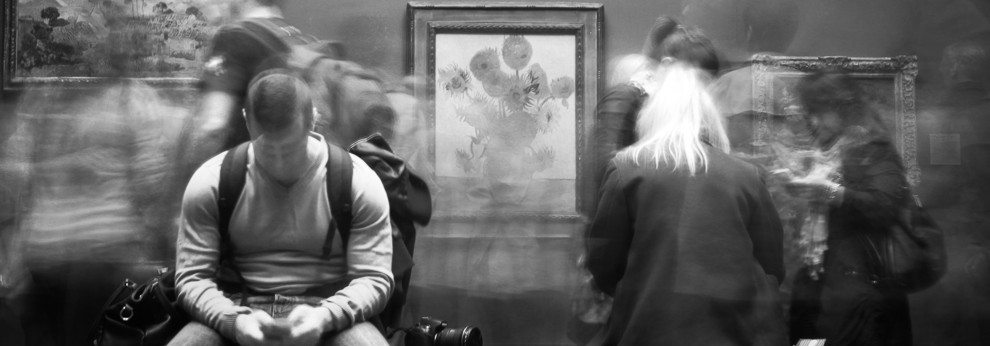“I believe it could be the very digitisation of art that saves it”
Technology is generally considered to make our daily lives much easier. From the omnipresence of mobile phones, to the ability to keep in contact with friends and family around the world, technology has become embedded into so many parts of our lives. But what about art?
Take our very own Mead Gallery’s current exhibit, The Human Document: The Photography of Persuasion from 1930s America to Present Day, which has an online community counterpart. An oft-mentioned critique of art is that it isn’t universally accessible; however, these online competitions encourage people to either leave a comment on one of the 100 photos on the site, or to create their own photo that features in the gallery or online. Winners receive a framed photograph from the original exhibition. Community participation, a personal touch, incentive… everything is in place to inspire online involvement. But do we want this digitisation of art? And if so, to what extent?
Apps are ideal in the demystification of the day-to-day experience of a museum.
Art moving online is not a recent phenomenon. The Google Art Project allows online access into some of the world’s most celebrated galleries, including London’s Tate Gallery and New York’s Museum of Modern Art. Some may argue that this diminishes the experience of going to a gallery: watching the reactions of others, approaching the canvas and imagining creating the whorls of paint. But let’s be honest: many can’t actually afford to do this. Financial consideration is one problem, but many also can’t find the time to travel or attend. Think of the busy young mother feeding her secret love of Frida Kahlo’s surrealist work and sharing this with her children in the best way she can. Think of the stressed student worrying about loans, and taking a moment to seek inspiration for their creative endeavours or future dreams in the brushstroke of an impressionist painting.
Using digitisation could breathe new life into smaller, unknown galleries and art platforms
This ability to access artworks with the touch of a button could revolutionise the way we think about art. On our commute, or drinking our morning coffee, platforms like Instagram and Snapchat have already allowed us an insight into museums and galleries to ponder in our quiet moments during a hectic day. Why not make our experience of art a daily experience, just as easy as clicking ‘like’? In fact, apps like these are ideal in demystifying the day-to-day experience of a museum. Rather than being stuffy institutions, museums and galleries often hold fun activities for members of the community: BME artists, young families and so on. The opportunity to become comfortable in this environment beforehand could make the experience of a gallery less intimidating and resolve the problem of what exactly you should do in a gallery. Looking at the exhibit is obviously the main point, but how do you really see and understand? Guidance on how to question a work, see the artist’s choice or even see how it relates to our lives today can be more easily conveyed by embracing technology. Consider, for instance, clever Tumblrs like Fly Art Productions where hip hop lyrics over famous artworks make us consider both art and music in a new way, as creative industries collaborate more and more in order to illustrate the relations between them.
Overall, technology could be a boon for art. It’s not like galleries and museums will cease to exist; using digitisation could breathe new life into smaller, unknown ones. Some critics argue that a less physical interaction with art is less personal, or that it is far easier to ‘scroll past’ a work of art than it is to walk past one in a gallery. However, I believe it could be the very digitisation of art that saves it.

Comments